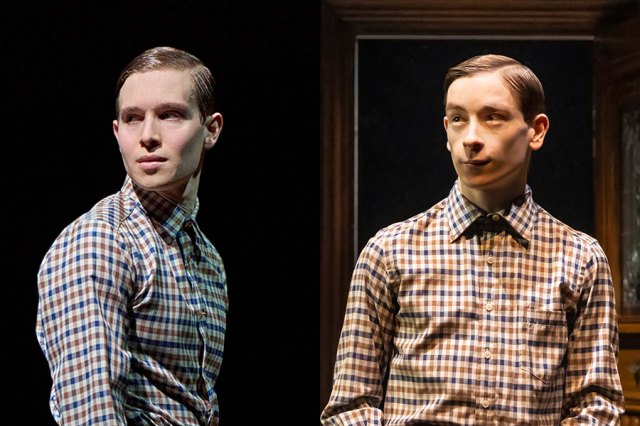
Musical theater buffs are pleased as punch that the original Broadway cast album of the 1961 Jule Styne–Betty Comden–Adolph Green musical Subways Are For Sleeping has finally been issued on CD–but some of us are more than a little surprised that the disc appeared on the Fynsworth Alley label, rather than Sony. After all, Sony pretty much owns and administrates all of the cast albums that were originally on the Columbia label and has, in fact, released a great many of those recordings on CD–everything from monster hits like Mame to semi-flops like Do I Hear A Waltz?. Not long ago, Fynsworth brought out Working, another cast album that was originally a Columbia LP. So, how did the company get its mitts on these titles?
“There are two different stories for the two reissues we’ve done,” says David Levy, vice president of Fynsworth until very recently (see below). “With Working, we just put in the request and…honestly, I think it sort of slipped through before anyone who could have stopped it noticed. The way that Sony is set up right now, there are two divisions that are sort of competing over who’s in control of the Broadway catalogue: the Sony Legacy division and the Sony Classical division. I think this was a situation where one didn’t know what the other was doing. Since Working, it’s been a lot harder to get anything out of them. But in the case of Subways Are For Sleeping, the original album was not actually produced by Columbia; it was all paid for by Jule Styne’s company, Stratford Music, and licensed to Columbia for 30 years. When that license expired, we went after it.”
Subways Are For Sleeping opened on December 27, 1961 at the St. James Theater. The show starred Sydney Chaplin, Carol Lawrence, Orson Bean, and Adolph Green’s wife, Phyllis Newman. It is probably best remembered for an outlandish stunt pulled by its producer, David Merrick–a stunt which is entertainingly recounted in Peter Filichia‘s liner notes for the CD. Fearing that the show would not garner positive reviews upon its Broadway opening, Merrick put into action a fiendishly clever plan he had conceived years before. He had his press agent find seven men in the New York/New Jersey area who possessed the same names as the seven major theater critics of the time: Howard Taubman, Walter Kerr, John Chapman, John McClain, Richard Watts, Norman Nadel, and Robert Coleman. He then invited the seven mock critics to dinner and to the show with the proviso that they would allow super-positive quotes about Subways to be printed in newspaper ads next to their names. (The gentlemen’s photos were also included, on the theory that nobody knows what critics look like anyway.) Though other publications smelled something fishy about the ad, it appeared in the Herald-Tribune on January 4, 1962, announcing misleadingly but not dishonestly that “7 out of 7 Are Ecstatically Unanimous About Subways Are For Sleeping.
Despite the publicity generated by this bold gimmick, Subways eked out a run of only 205 performances–not a huge flop in those days, but neither did the show manage to recoup all of its $300,000 investment. The cast album can now be enjoyed for its pleasant score and some fine performances, Chaplin excepted. “We worked with the Styne estate and with Comden and Green on this release,” says Levy. “When Sony Classical was in charge of the Broadway catalogue, they had thought about doing Subways, but that was right around the time when the license expired. Comden and Green and the people at the Styne estate were excited when we expressed interest. We all worked together to make it happen.” The album, by the way, includes six bonus tracks consisting mostly of songs cut from the show, culled from two separate demo tapes (one with Comden and Green on vocals and Styne at the piano, the other featuring studio singers and a small orchestra).
I spoke to Levy about all of this three days ago, and he gave me no inkling of what he has since announced on the Internet: the fact that he and Fynsworth president Bruce Kimmel are no longer working for the company as of Saturday, October 20. “All of our ties to the company have been severed,” Levy wrote in a posting in the “All That Chat” section of the website Talkin’ Broadway. “We wish all our customers and artists the best. We are disappointed about this turn of events but look forward to whatever the future holds.”
In an e-mail received on Sunday, October 21, Levy confirmed to me that, indeed, he and Kimmel are no longer working for Fynsworth. He said that interested parties should feel free to contact him at [email protected] and/or Kimmel at [email protected] if they have general questions, but he wanted to make it clear that neither of them can provide information about unfilled Fynsworth orders or unreleased projects. On Monday, October 22, Fynsworth PR man Andrew Freedman called me to also confirm the termination of the relationship. “We wish them the best in all of their future endeavors,” said Freedman of Kimmel and Levy, adding that “Fynsworth Alley has every intention of continuing the provide the type of product that its audience has appreciated. There are six projects now being mastered, including albums of Donna McKechnie, Klea Blackhurst, and the Sherman brothers, as well as a recording of Christopher Durang‘s Beyond Therapy. We also have a cast album of the Pasadena Playouse production of Do I Hear A Waltz? starring Carol Lawrence; we expect to release that and one other item before the end of the year.”
The departure of Kimmel and Levy from Fynsworth will surely come as sad news to musical theater enthusiasts, as these two gents have shown an oustanding commitment to recorded documents of the art form. We, too, wish them the best.







